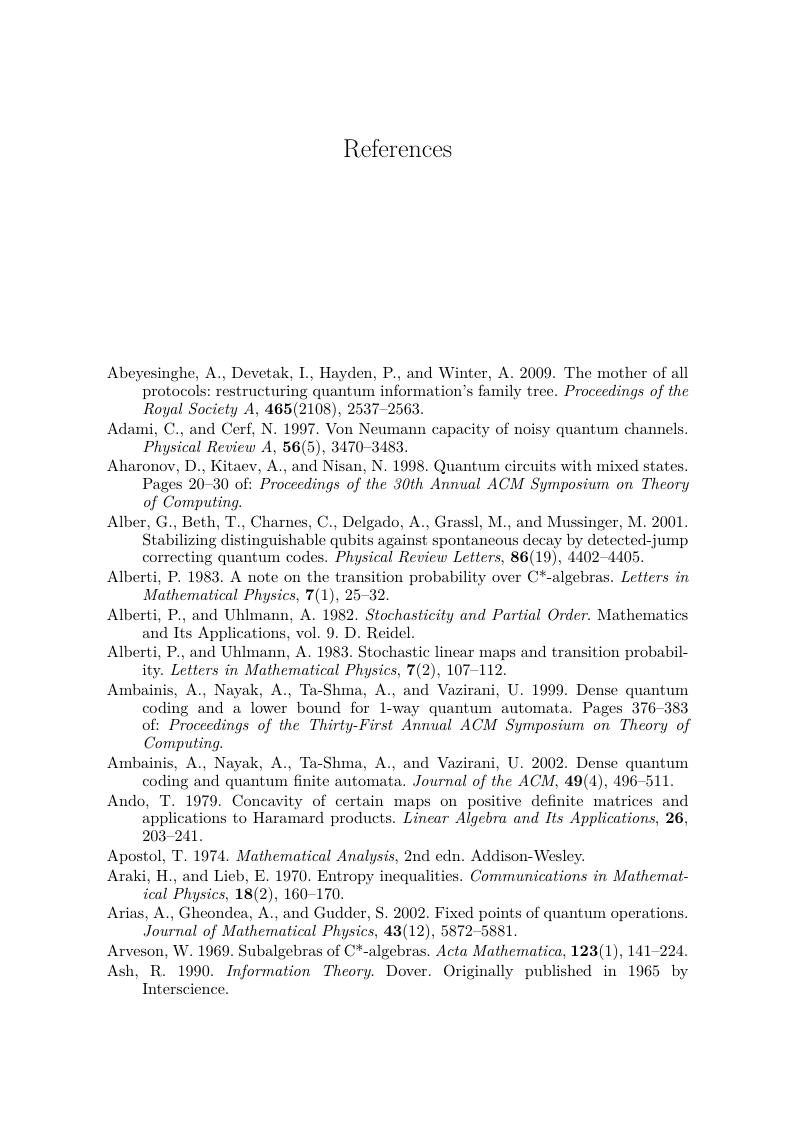Book contents
- Frontmatter
- Contents
- Preface
- 1 Mathematical Preliminaries
- 2 Basic Notions of Quantum Information
- 3 Similarity and Distance Among States and Channels
- 4 Unital Channels and Majorization
- 5 Quantum Entropy and Source Coding
- 6 Bipartite Entanglement
- 7 Permutation Invariance and Unitarily Invariant Measures
- 8 Quantum Channel Capacities
- References
- Index of Symbols
- Index
- References
References
Published online by Cambridge University Press: 17 May 2018
- Frontmatter
- Contents
- Preface
- 1 Mathematical Preliminaries
- 2 Basic Notions of Quantum Information
- 3 Similarity and Distance Among States and Channels
- 4 Unital Channels and Majorization
- 5 Quantum Entropy and Source Coding
- 6 Bipartite Entanglement
- 7 Permutation Invariance and Unitarily Invariant Measures
- 8 Quantum Channel Capacities
- References
- Index of Symbols
- Index
- References
Summary

- Type
- Chapter
- Information
- The Theory of Quantum Information , pp. 561 - 572Publisher: Cambridge University PressPrint publication year: 2018



